- 7 Top Flite Golf Clubs XL for Improved Performance - September 28, 2024
- Top Flite Golf Clubs: Top 5 Reasons to Choose Them - September 28, 2024
- Top 3 Golf Club Fitters for a Perfect Swing - September 28, 2024
You can expect your golf clubs to wear out over time, with factors like frequency of play, storage conditions, and maintenance routines having a substantial impact on their lifespan, which can range from 3 to 10 years for most clubs, although some like putters can last up to 15-20 years. Signs of worn-out clubs include visible cracks, loss of familiar feedback, and decreased distance or accuracy. Proper care and maintenance can add years to your club's life. By understanding the factors that affect club deterioration and learning how to extend their lifespan, you'll be able to make informed decisions about when to upgrade and make the most of your game.
Key Takeaways
- Golf clubs do wear out, with frequency of play impacting their lifespan, which can range from 3 to 10 years.
- Drivers wear out faster due to intense hits, while putters can last 15-20 years, and irons typically last around 300 rounds.
- Signs of worn-out clubs include visible cracks, loss of familiar 'click', decrease in distance or accuracy, and smooth or frayed grips.
- Proper maintenance, such as regular cleaning and storage, can add years to a club's life, while neglect can accelerate deterioration.
- Upgrading to new clubs with advanced technology can enhance performance, improve game experience, and lead to a more consistent swing.
Golf Club Lifespan Factors
When determining the lifespan of your golf clubs, several key factors come into play, including the frequency of play and the level of care you devote to your equipment. As you hit the links more often, your clubs naturally experience wear and tear, reducing their lifespan. The lifespan of golf clubs can vary significantly, ranging from 3 to 10 years depending on your usage and maintenance habits.
Different clubs have distinct lifespans due to their unique characteristics and uses. For instance, drivers, which are subject to intense hits, tend to wear out faster than other clubs. On the other hand, putters, which experience minimal wear during use, can last 15-20 years or more. Irons and woods fall somewhere in between, with irons lasting around 300 rounds of golf and woods enduring about 150-200 rounds before showing signs of wear and tear.
Understanding these factors is crucial in maximizing the lifespan of your golf clubs. By recognizing the impact of frequency of play and care on your equipment, you can take proactive steps to extend their lifespan and maintain optimal performance.
Signs of Worn-Out Clubs
As you examine your golf clubs, look for visible signs of wear, such as cracks, dents, or scratches on the club faces, which can indicate that your clubs have reached the end of their lifespan.
Beyond visual damage, pay attention to how your clubs feel during swings. If you've lost that familiar 'click' or sense of feedback, it may be a sign that your clubs are no longer performing as they should.
Additionally, if you've noticed a decrease in distance or accuracy compared to your previous performances, it could be a sign that your clubs are worn out.
Another indicator of worn-out clubs is the condition of the grips. If they're smooth, shiny, or frayed, it's likely time to replace them.
Finally, check the shafts for excessive flexibility or bending, which can also signal the end of your clubs' lifespan.
How long do golf clubs last? It depends on usage and maintenance, but if you've noticed any of these signs, it's likely time to contemplate upgrading.
Extending Club Lifespan Tips
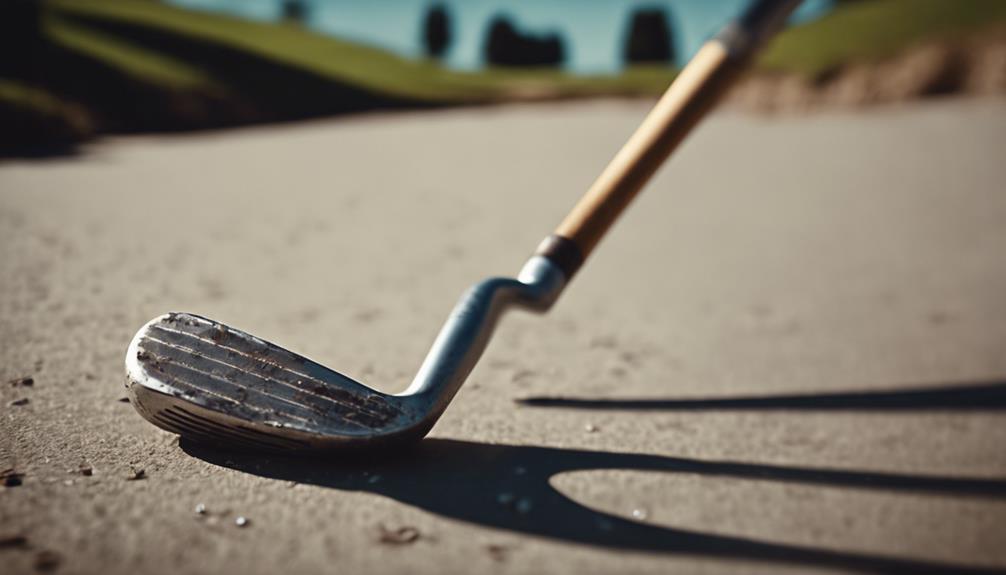
You can greatly prolong the life of your golf clubs by adopting a few simple maintenance habits and storage practices. Regular cleaning, for instance, is essential to prevent dirt and debris from accumulating and causing damage. Use a soft-bristled brush to remove dirt from the clubhead and shaft, and wipe down the grip with a damp cloth.
After each use, store your clubs in a dry, cool place, away from direct sunlight. Avoid stacking them, as this can cause scratches and dings. When traveling, invest in a high-quality golf bag or case to protect your clubs from impact and scratches.
Proper care and maintenance can add years to the life of your golf clubs, saving you the cost of investing in new golf equipment prematurely. By following these simple tips, you can make sure your clubs remain in top condition, allowing you to focus on improving your game rather than worrying about the state of your gear.
Upgrading Your Golf Gear
By integrating advanced technology into your golf gear, you can bridge performance gaps and access significant improvements in your overall game. Upgrading your golf gear is an essential step in elevating your skills, and it starts with choosing the right clubs.
Look for new clubs that incorporate cutting-edge technology, addressing distance gaps and forgiveness. Consider factors like spin rate and distance when making your selection, as these can greatly impact your performance.
Investing in high-quality clubs from reputable brands can enhance your overall experience on the course. New clubs can provide you with the right tools to excel in different situations, from driving to putting.
Club Deterioration Rates
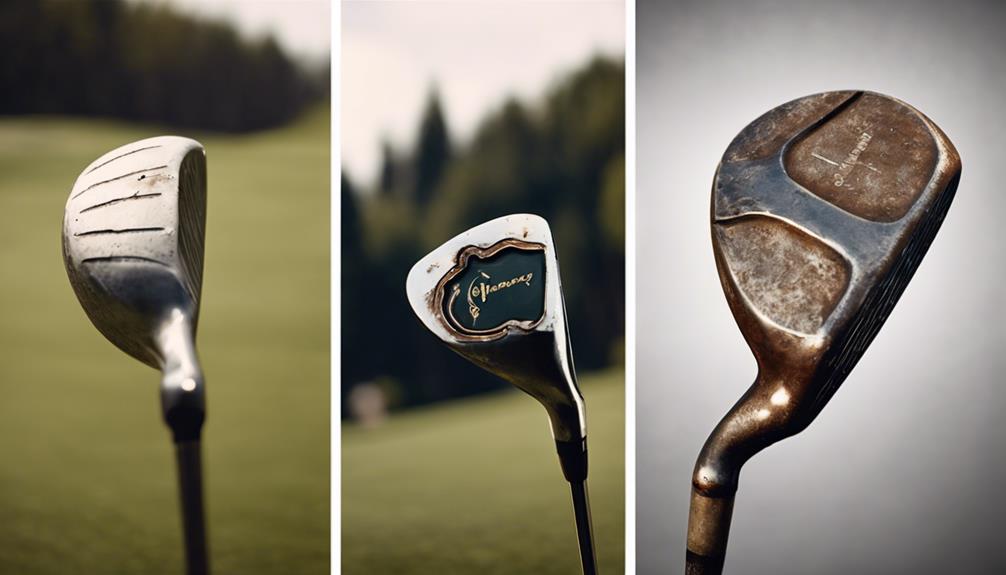
Golf clubs, despite their durability, do eventually wear out, and understanding the deterioration rates of your clubs is essential in maintaining peak performance. As an avid golfer, you're likely aware that metal heads and shafts are built to last, undergoing rigorous testing to guarantee they withstand the rigors of the game.
However, even with their impressive durability, clubs can deteriorate if exposed to extreme conditions, such as prolonged rain or harsh chemicals. Titanium, a common material used in club construction, has a half-life of approximately 60 years, indicating an impressive level of durability.
In reality, club deterioration is a slow process, and you're unlikely to notice significant changes in performance over time. Golf clubs are designed to withstand high cycle fatigue, ensuring they remain intact and perform effectively for an extended period.
As you continue to use your clubs, keep in mind that their durability is exceptional, and maintenance is vital to prolonging their lifespan. By understanding the deterioration rates of your clubs, you'll be better equipped to maintain peak performance and get the most out of your game.
Forgiveness and Distance Gaps
Optimizing your club selection relies on understanding the forgiveness and distance gaps between each club, as even minor miscalculations can greatly impact your overall performance.
You see, forgiveness plays a vital role in compensating for off-center hits, helping maintain distance and accuracy. Meanwhile, comprehending distance gaps between clubs is imperative for selecting the right club for each shot.
When it comes to forgiveness, modern club designs have made significant progress. Larger sweet spots and perimeter weighting have improved forgiveness in clubs, resulting in more consistent ball striking.
However, addressing distance gaps with properly fitted clubs is vital to enhance overall performance on the course.
To master your club selection, keep the following in mind:
- Forgiveness can compensate for off-center hits, maintaining distance and accuracy
- Larger sweet spots and perimeter weighting improve forgiveness in clubs
- Understanding distance gaps between clubs is crucial for selecting the right club
- Properly fitted clubs can enhance overall performance on the course
Loft Variations and Performance
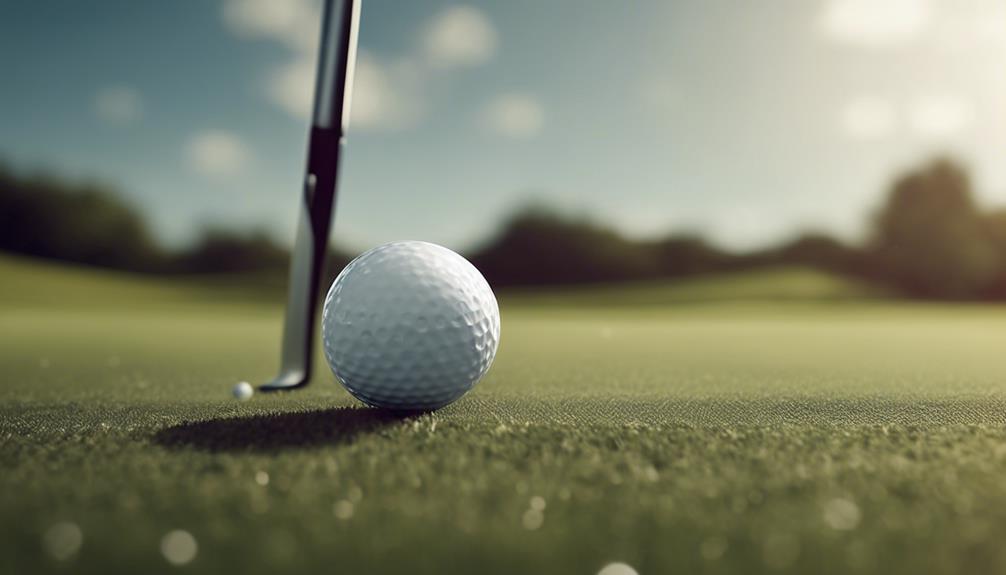
You'll find that differences in iron lofts, which can vary by as much as 5 degrees between models, greatly impact both distance and trajectory. These variances can alter your game significantly, and it's crucial to grasp their effects.
While you might rely on knowing your club distances rather than stamped loft information, it's vital to acknowledge the role of loft in your performance.
Manufacturers often refrain from stamping lofts on clubs due to past confusion and misinterpretation. However, loft information is readily available on their websites for you to reference. By consulting these resources, you can better comprehend how loft variations influence your ball flight dynamics.
Interestingly, ball flight dynamics play a more noteworthy role in your performance than loft variations in clubs.
To optimize your performance, it's essential to take into account both loft variations and ball flight dynamics. By doing so, you'll gain a deeper understanding of how your clubs interact with the ball, leading to more consistent and accurate shots.
Driver Failure and CT Test
When you're considering the CT test, you need to understand the tolerance zone that manufacturers design within to guarantee their drivers conform to regulations.
You'll find that this zone is critical, as even slight variations can lead to driver failure.
CT Test Tolerance Zone
Manufacturers carefully design drivers to fall within the CT test's tolerance zone, ensuring their products meet regulatory standards while minimizing the risk of failure.
As you explore further into the world of golf, you'll realize that the CT test is an essential benchmark for driver conformity. The test's tolerance zone is vital, as it allows for minor variations in design without compromising performance.
Here's what you need to know about the CT test tolerance zone:
- A conforming driver may only be a few yards better than a nonconforming one, highlighting the narrow margin between passing and failing the CT test.
- Micro-fissures or metal fatigue can lead to nonconforming drivers, which may still appear to be in perfect condition.
- The PGA Tour's random testing encourages manufacturers to adhere to the rules, ensuring that drivers used in professional tournaments meet the highest standards.
- The difference between a conforming and nonconforming driver can be minimal, emphasizing the importance of meeting CT test standards.
Manufacturers' Design Considerations
By carefully balancing performance and regulatory compliance, golf club designers must consider the fine line between a conforming driver and one that fails the CT test, often due to minor variations in design or unforeseen factors like micro-cracks.
When designing new equipment, manufacturers' design considerations revolve around ensuring their drivers operate within the CT test's tolerance zone. This means they must walk a tightrope between maximizing performance and adhering to regulations.
Failing the CT test doesn't necessarily mean a driver is extensively nonconforming; in some cases, the difference can be as little as a few yards. The PGA Tour's random testing helps maintain accountability, as manufacturers strive to create drivers that meet the rules.
However, even with meticulous design, drivers can still become nonconforming over time due to metal fatigue or micro-cracks. As you consider investing in new equipment, it's crucial to understand the intricacies of manufacturers' design considerations and the importance of adhering to regulations to ensure peak performance and compliance.
Golf Club Maintenance Essentials
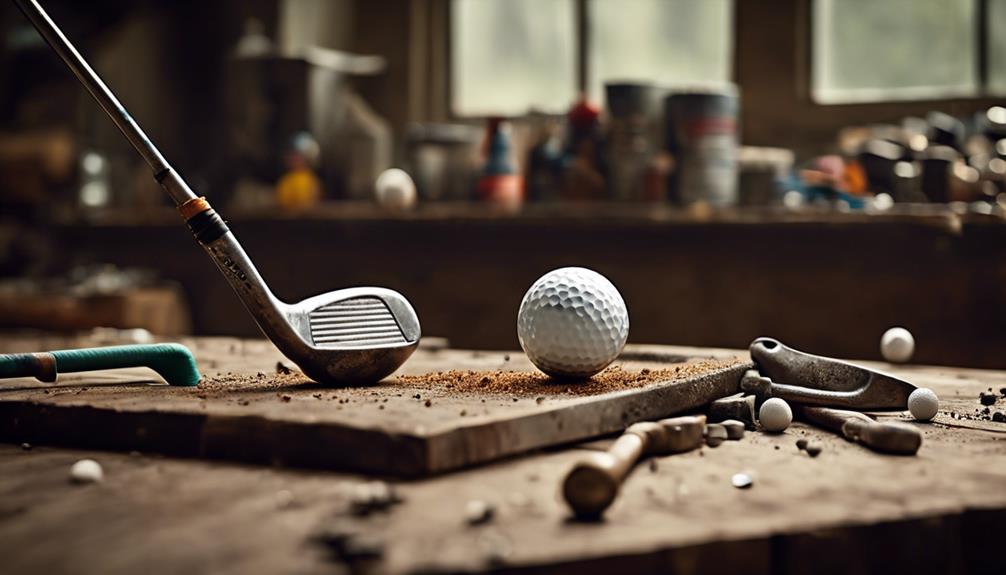
As you take steps to extend the life of your golf clubs, it's essential that you prioritize regular cleaning, proper storage, and frequent inspections.
You'll want to develop a habit of cleaning your clubs regularly to prevent dirt and debris from accumulating and causing damage. By doing so, you'll be able to identify any potential issues early on and take corrective action to prevent wear and tear.
Clean Clubs Regularly
You take a crucial step towards maintaining your golf clubs' performance by cleaning them regularly after each shot or round with a wet and dry towel. This prevents dirt buildup that can compromise their precision. This simple habit helps maintain the clubs' original specifications, ensuring consistent performance and extending their lifespan.
When cleaning your clubs, remember:
- Use a metallic brush to clean iron grooves and a plastic brush for metal clubs to effectively remove dirt and debris.
- Regularly inspect your club grips for wear and consider replacing them annually to maintain a secure hold and consistent swing.
- Clean clubs thoroughly with a wet towel, paying attention to the clubface, grooves, and shaft.
- Dry your clubs with a dry towel to prevent water spots and rust.
Proper Storage Matters
Storing your golf clubs in a cool, dry place is crucial to preventing rust and damage, as exposure to extreme temperatures and humidity can greatly shorten their lifespan. You wouldn't want your golf equipment to deteriorate prematurely, would you?
When storing your clubs, make sure to keep them away from harsh chemicals and abrasive materials that can cause scratches or corrosion. Invest in sturdy bags and head covers to protect your clubs from unnecessary wear and tear. These accessories are designed to shield your golf equipment from damage, ensuring they remain in top condition.
Inspect Clubs Often
Regular inspections of your golf clubs can uncover hidden problems that, if left unchecked, can greatly impact your game. By making inspecting your clubs a regular part of your maintenance routine, you can catch issues before they become major problems. This is especially important for golfers who play frequently, as wear and tear can add up quickly.
When you inspect your clubs, be on the lookout for:
- Cracks, dents, or worn grooves on the clubhead
- Worn grips that can affect your grip and performance
- Flexibility or bending issues in the shaft
- Any signs of corrosion or rust on the club
Factors Affecting Longevity
As golfers invest considerable time and money in their clubs, understanding the factors that influence their lifespan is essential. It becomes clear that a combination of usage patterns, material quality, and maintenance routines all play a noteworthy role in determining how long their clubs will last.
Your golf clubs' longevity is heavily influenced by how often you play and the conditions you play in. Frequent play and exposure to harsh weather conditions, for instance, can lead to faster wear and tear. The quality of your clubs' materials and construction also matters; high-quality clubs made with durable materials will generally outlast cheaper alternatives. Moreover, your maintenance habits, such as regular cleaning and proper storage, can significantly impact the overall condition of your clubs.
Additionally, technological advancements and environmental factors, like storage conditions, can also affect the lifespan of your golf clubs. By understanding these factors, you can take steps to maximize the lifespan of your golf clubs and get the most out of your investment.
Replacing Clubs for Better Game
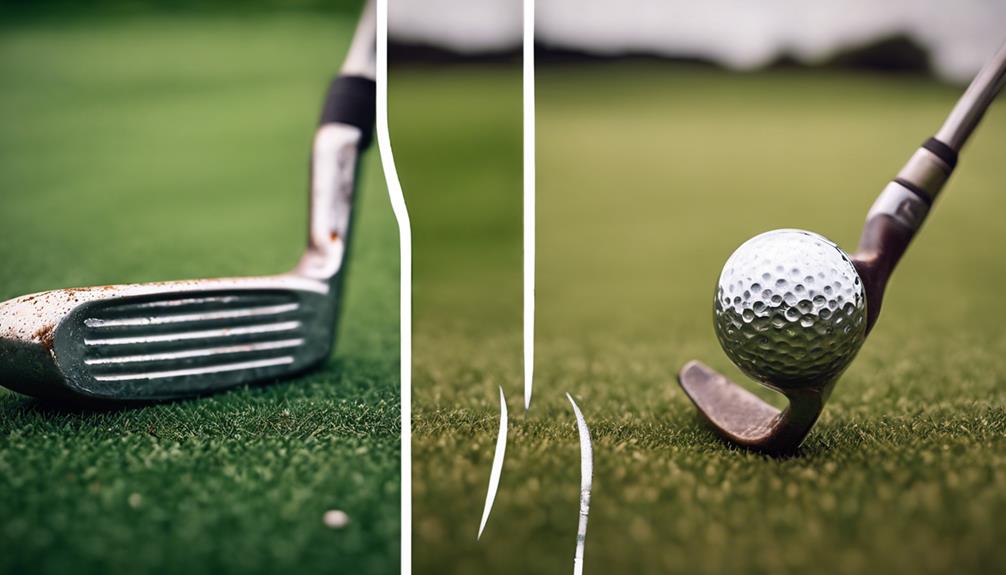
Nearly half of golfers replace their clubs every four years, a proof of the significance of upgrading to optimize your game performance. You might be wondering if it's time to swap out your trusty old clubs for new ones. If you're experiencing declining performance, inconsistent distances, or visible wear, it's likely time for an upgrade.
Here are some key benefits to take into account when replacing your clubs:
- New clubs incorporate the latest technology advancements, leading to improved game performance and satisfaction.
- Custom fitting options in new clubs provide tailored solutions for individual players, enhancing overall play.
- Regular maintenance and cleaning can extend the lifespan of your new clubs, reducing the need for frequent replacements.
- Upgrading to new clubs can help you achieve a more consistent swing and better overall results.
Frequently Asked Questions
How to Know When Golf Clubs Are Worn Out?
You'll know it's time for replacement when you spot visible signs of wear, such as cracked faces or worn-out grooves, and notice decreased performance; regular maintenance and care can extend the lifespan, but don't delay replacement when needed.
How Often Should Golf Clubs Be Replaced?
You're probably replacing your golf clubs every 4 years, like most golfers, but consider upgrading every 2-3 years if you notice signs of wear, such as worn-out grooves or loose shafts, to maintain peak performance and consistency.
How Long Do Golf Irons Last?
You'll find that golf irons can last around 300 rounds, equivalent to 10 years of play, before iron durability wanes and replacement frequency increases, depending on your usage and maintenance habits.
How Do I Know if My Golf Clubs Are Still Good?
You'll know your golf clubs are still good if you maintain them properly, inspect for signs of wear, and focus on improving your swing; if not, outdated tech or worn-out grooves might be hindering your game.
Conclusion
As you step onto the green, the fate of your game hangs in the balance. Will your trusty clubs deliver, or will they betray you?
The wear and tear of countless swings have taken their toll, and the signs are there – if you know where to look. Don't let worn-out clubs hold you back any longer.
Stay vigilant, and when the time comes, be prepared to upgrade. Your game is on the line, and the clock is ticking.




